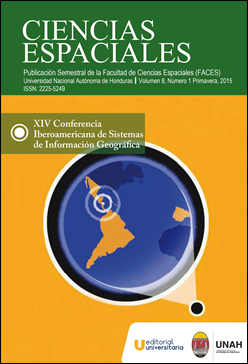Geographic information systems and the preservation of natural and cultural heritage: the exploration of the Honduran Mosquitia
DOI:
https://doi.org/10.5377/ce.v8i1.2052Keywords:
LIDAR, Optical Radar, Geographic Information Systems, Archeology, Honduran MosquitiaAbstract
In May 2012, after more than a year of research and planning, a group led by cinematographer Steve Elkins and backed by Bill Benenson and Garry Spire, conducted the first ever airborne LiDAR exploratory survey of the Honduran Mosquitia region utilizing a Cessna 337 twin engine airplane. LiDAR technology, which is an acronym for Light Detection and Ranging, is also known as Optical Radar or laser Radar and it employs laser pulses to generate three-dimensional maps of the of the Earth’s surface. Current LiDAR units can generally record multiple returns per laser shot, and as the pulses propagate through partial openings in the forest canopy, they produce returns from the vegetation, the underlying terrain, or both. Through the use of morphological filters it is possible to classify returns as coming from the vegetation or ground, and the ground returns reveal what is hidden under the forest canopy. La Mosquitia jungle provides the toughest conditions on which to test airborne LiDAR capabilities.
The LiDAR data collection, processing and preliminary analysis were performed by researchers from the University of Houston (UH) Geosensing Engineering and Science Research Center and the National Science Foundation National Center for Airborne Laser Mapping (NCALM). The survey was focused in several areas within a jungle area of roughly 1000 km² in the department of Gracias a Dios. The flight plans and equipment were configured to maximize canopy penetration. Firing more than 20 laser pulses/m², which yielded approximately 31 returns/m², only 1 or 2 of which were found to be ground returns. Under the forest canopy, the digital elevation models reveal an exuberant topography and a very complex hydrology. Perhaps even more interesting, they reveal extended anthropogenic terrain modifications in what appear to be archeological remains.
Revista Ciencias Espaciales, Volumen 8, Número 1 Primavera, 2015; 260-276
Downloads
1028




